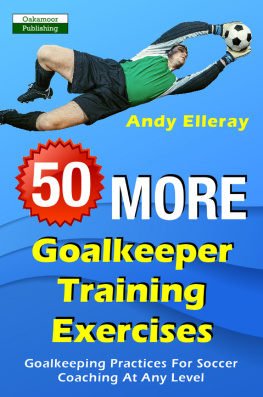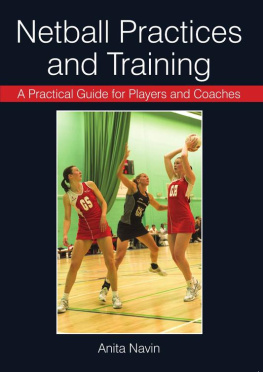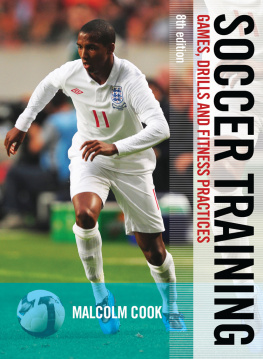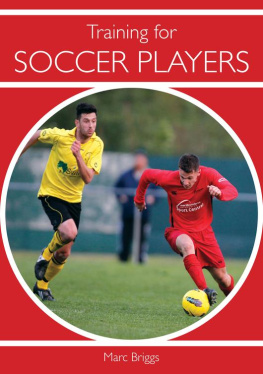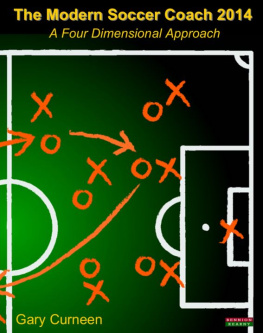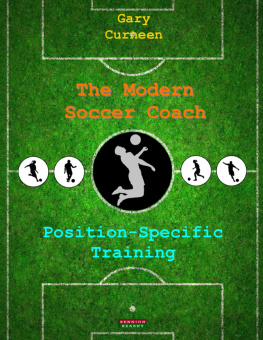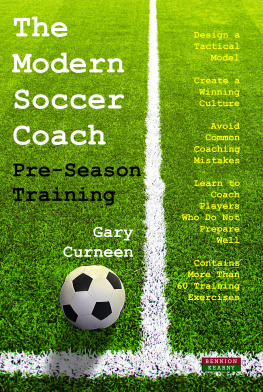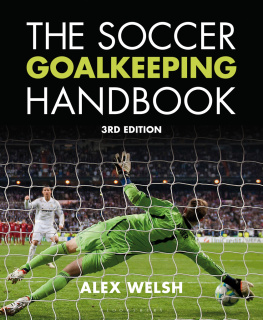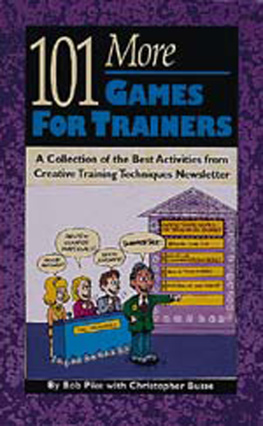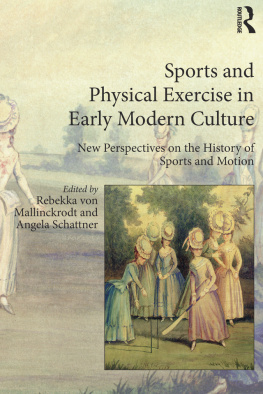Table of Contents
65 Goalkeeper Training Exercises: Modern Games-Based Soccer Drills for Shot Stopping, Footwork, Distribution, and More
*
Andy Elleray
*
[Smashwords Edition]
*

An imprint of Bennion Kearny
*
Published in 2017 by Oakamoor Publishing, an imprint of Bennion Kearny Limited.
ISBN: 978-1-910773-47-5
All Rights Reserved. No part of this publication may be reproduced, stored in a retrieval system, or transmitted in any form or by any means, electronic, mechanical, photocopying, recording or otherwise, without the prior permission of the publisher.
This book is sold subject to the condition that it shall not, by way of trade or otherwise, be lent, re-sold, hired out or otherwise circulated without the publishers prior consent in any form of binding or cover other than that it which it is published and without a similar condition including this condition being imposed on the subsequent purchaser.
Oakamoor Publishing has endeavoured to provide trademark information about all the companies and products mentioned in this book by the appropriate use of capitals. However, Oakamoor Publishing cannot guarantee the accuracy of this information.
Published by Oakamoor Publishing, an imprint of Bennion Kearny Limited, 6 Woodside, Churnet View Road, Oakamoor, Staffordshire, ST10 3AE
www.BennionKearny.com
About This Book
This book utilises curated content from Andy Ellerays acclaimed book Scientific Approaches to Goalkeeping in Football: A practical perspective on the most unique position in sport.
Please email Info@BennionKearny.com for details.
About the Author
Andy Elleray is a goalkeeping coach who also specializes in performance analysis and sports science. His former clubs include Cheltenham Town, Liverpool and Chelsea, working at different levels, and in a variety of roles. He is currently responsible for the goalkeeping development at Birmingham City Ladies Football Club where he works at all levels of the club with youth international goalkeepers in the female game. He is also involved in different regional and youth international coaching environments. Holding UEFA qualifications, Youth Awards, and a Masters degree, Andy blends different approaches into his current coaching projects.
Previously he has undertaken research projects and presented at International sports and football conferences over Europe on various elements of goalkeeping in Football. These include the ISPAS (Performance Analysis Congress), Intentional Goalkeeping Conference, and the Science & Football Conference. His work has taken him into Sports Science Lectureship over the past two years.
Games-Based Goalkeeper Training
In my career Ive had the privilege of working with a host of different ages and abilities, not just within goalkeeping and football but also across numerous other sports. I would say - like most coaches - that my experiences have helped shape the way I approach my coaching and the philosophy which I endeavour to follow.
Having taken numerous coaching courses in football, handball, and basketball to name but a few, the content of these courses have given me a platform to build my approach utilising different drills, skills, and techniques from each.
From the outset I will stress that standard technical drills still have an important role to play in goalkeeper development. What this coaching concept aims to do is offer an alternative to the drill-based sessions - not replace them. Training must replicate match situations for a number of reasons but most importantly for decision making the concept takes specific skills for goalkeeping into different environments whilst still building up skill acquisition and familiarity. A key aim of the training theory is to produce skilful goalkeepers, not just technical goalkeepers. By this I mean that we should be training keepers not to simply be proficient in handling, footwork and positioning in isolated situations, they need to adaptable, reactive, and able to utilise different goalkeeping skills within different match-specific scenarios.
It is important, from a physical viewpoint, that games are played in a short, sharp and intense manner. Some of the games can be quite chaotic, so make sure there are good rest periods just as players would face in a match periods of inactivity with good amounts of physical recovery time.
This games-based approach can perhaps be likened to the goalkeeping version of Futsal, where the player receives more touches and time on the ball. Futsal is a fantastic game for goalkeepers for working on close control, being pressured on the ball, playing as a sweeper, and shifting the ball with sharpness - not to mention enhancing reactions through quickfire shooting and saving the ball (not just with hands). Some games involve the goalkeeper without the ball, which is extremely common in matches. Necessary concentration must be applied in these environments!
The games-based methodology has been used successfully in many different environments. From grassroots novice goalkeeping centres right up to elite youth level each level of coach will be able to take certain games from the ones shown with beginner coaches (in my experience) using the games to develop basic goalkeeping skills.
So, lets crack on and get this ball rolling
An Introduction to Teaching Games for Understanding
One method of teaching I was exposed to early on in my University life was that of TGfU (Teaching Games for Understanding). Brought to light by Bunker and Thorpe in the early 1980s and perfected by people such as John Allpress (The FA) and Lynn Kidman, this philosophy is focused around the game (or sport) being the teacher with the participant taking a direct involvement in learning. The way this works is that the coach sets up the environment and lets participants make decisions for themselves rather than orchestrating proceedings directly. The coach does so by asking specific questions and setting up game-specific scenarios which often seem chaotic but which aim to replicate a match situation. These questions might include: How can you be in a more effective position to save that ball?, By changing your position can you help the team?, What technique might be more appropriate to save the ball?, or What commands does your teammate need in this situation?
For some of the games, lists of potential coaching points that may arise have been included. Although not every single coaching point has been written down, the ones included should give you a good basis to start the games, providing cues as to what situations might arise and staying aware of the goalkeeping demands within the games. Along with these, a few suggested starting points are included (for some of the games) that are designed to put the coach in a position to organise matters effectively.
This way of learning is different to most current goalkeeper training which involves technical practices isolated in the goal or penalty areas. These TGfU games (if purposeful) offer an alternative approach that complements current goalkeeping work. Specific drill work which focuses on a topic or movement is still useful when the situation requires it, but it is important to remember that athletes learn better when the environment is realistic.
Much of games-based goalkeeper training is designed for coaches who have a large group of goalkeepers to work with. With large numbers, it is very hard to do small technical practices in goals, because of space constraints and having so many goalkeepers not working (or only working as servers or passive players).


